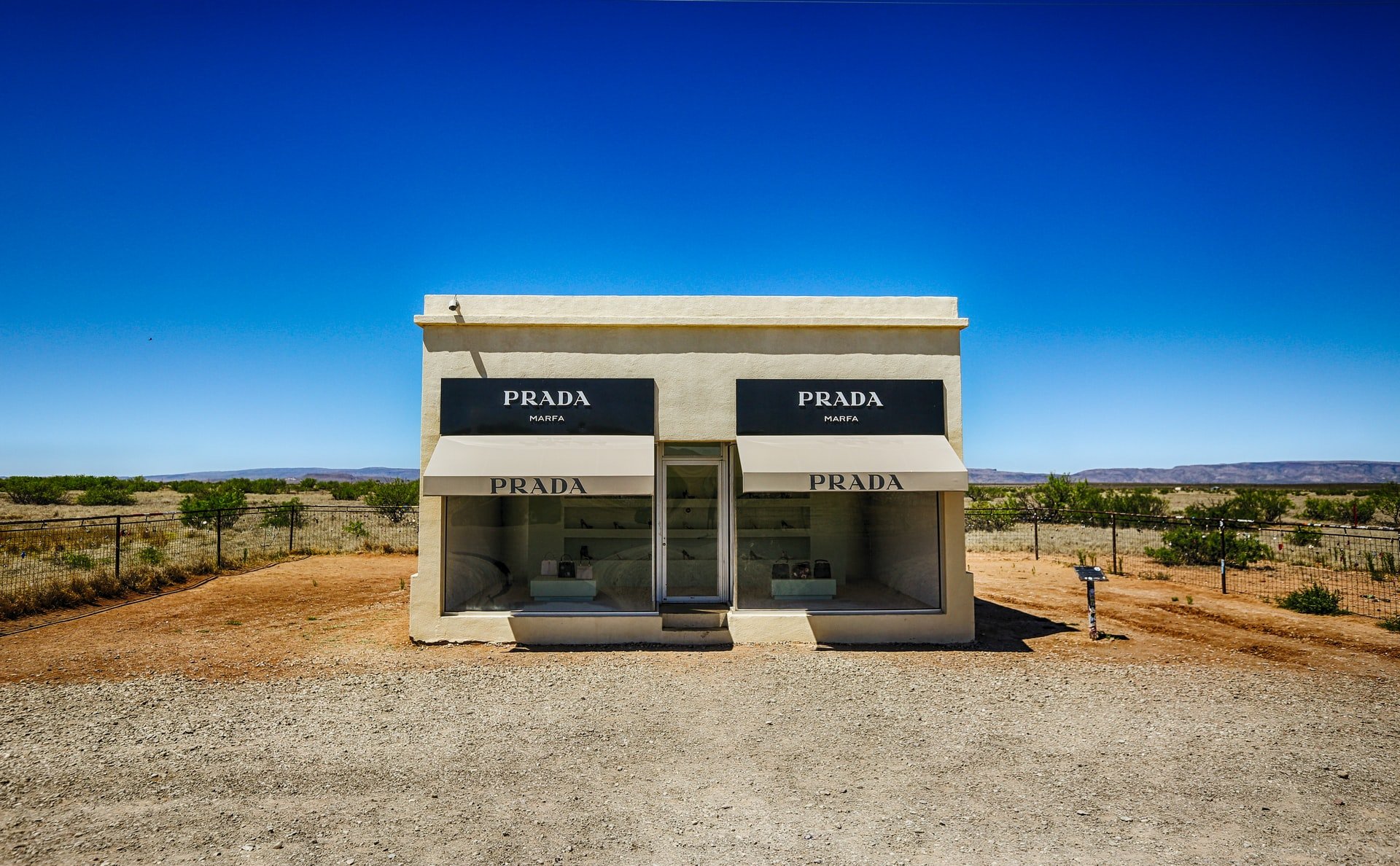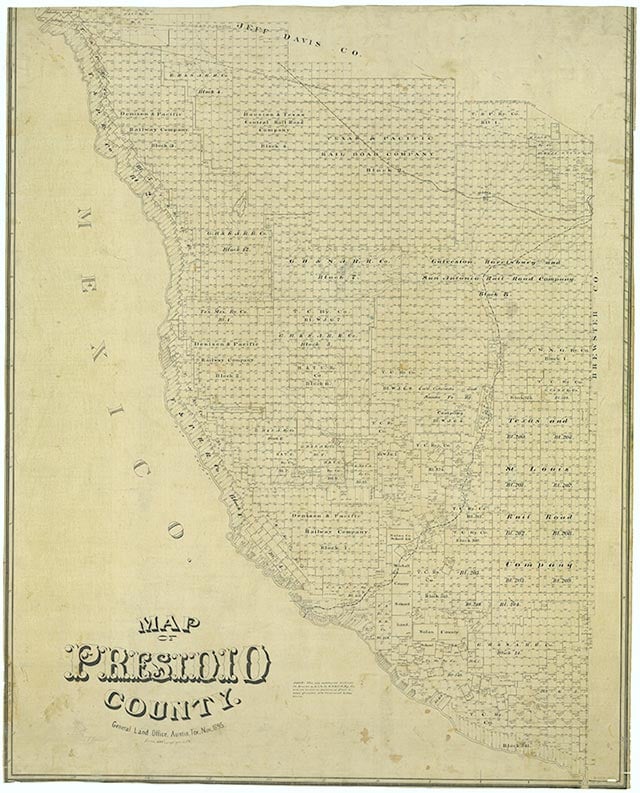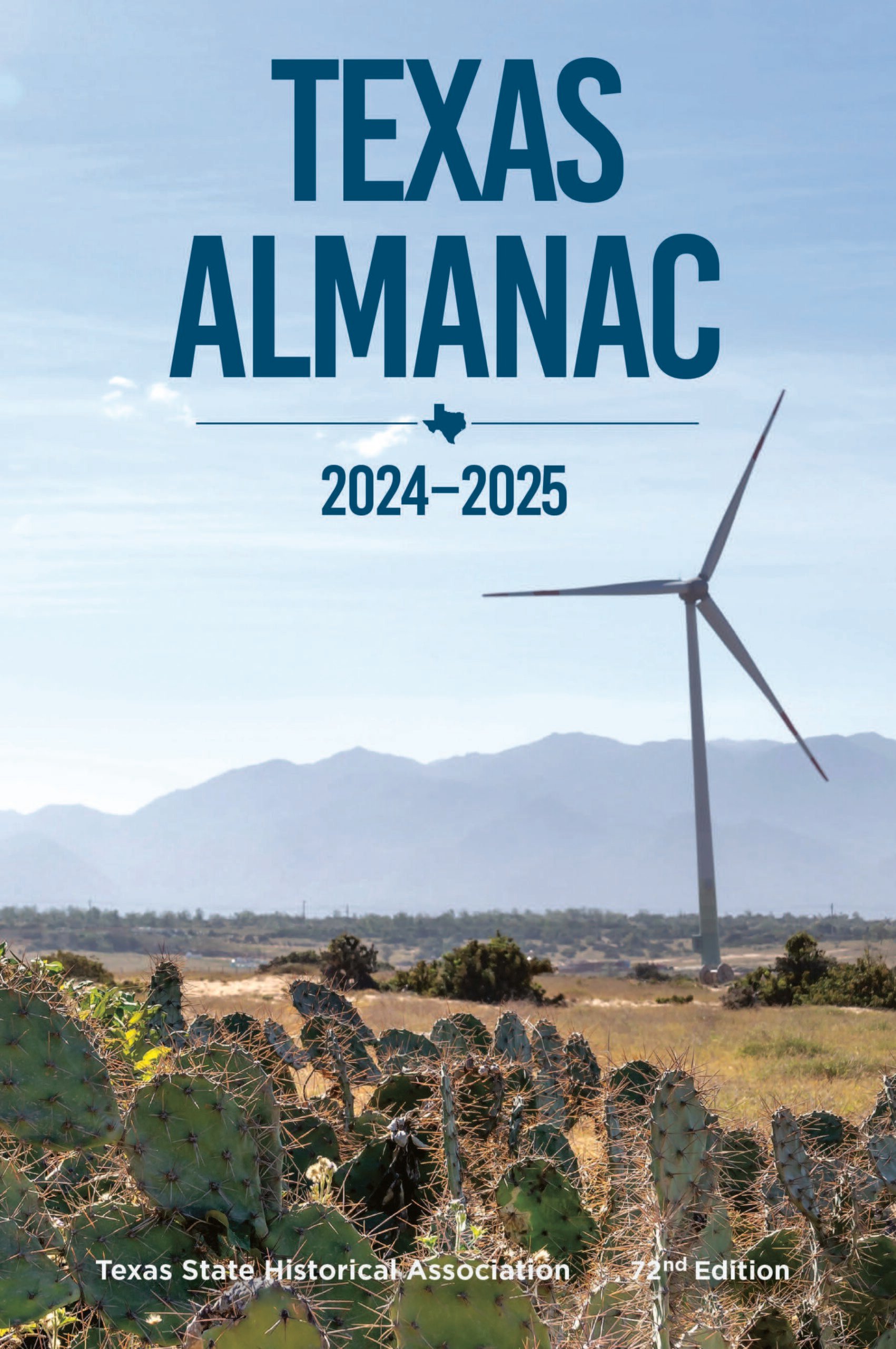Marfa

Marfa, Texas

Marfa, the county seat of Presidio County, is at the junction of U.S. Highways 90 and 67 in the northeastern part of the county. It was established in 1883 as a water stop and freight headquarters for the Galveston, Harrisburg and San Antonio Railway. Reportedly, the wife of a railroad executive suggested the name Marfa from Fyodor Dostoyevsky's The Brothers Karamazov, which she was reading at the time. Another version of the story claims that the town was named for the character Marfa Strogoff in Jules Verne's Michael Strogoff. Marfa is in an area that has been called one of the last American frontiers. It is situated at an altitude of 4,830 feet above sea level in a semiarid region with many dry streambeds that the summer thunderstorms fill and further erode. To the north are the Davis Mountains, to the southeast the Chisos Mountains, and to the southwest the Chinati Mountains. Marfa lies semiprotected within these escarpments on a great highland plain known as the Marfa Plateau. By 1885 Marfa had one or two saloons, a hotel, and a general merchandise store—Humphris and Company. Poker bets in the saloons were often made with deeds to town lots. At the St. George Hotel stayed drummers—traveling salesmen—who came by train, established their headquarters in the hotel, and from Marfa made stagecoach trips to Shafter, Fort Davis, Valentine, and Presidio to show their wares. Humphris and Company's store also contained the bank, the post office (established in 1883), and a restaurant. In 1885 Marfa replaced Fort Davis as the Presidio county seat, and in July of that year the public records were moved from Fort Davis to Marfa. Also in 1885 a three-story Renaissance-revival courthouse was built at Marfa. It cost $60,000, and in the early 1990s it still housed the county offices. In 1885 and 1886 Marfa gained churches, a school, and a newspaper. C. M. Jennings began publishing the New Era, the town's first weekly newspaper, in 1886. Over the years, it changed hands several times until the weekly finally merged with the Big Bend Sentinel under the management of T. E. Childers. In 1900 the population of Marfa was 900. Eventually the town had literary clubs, fraternal organizations, telephone service, and a bank. By 1920 Marfa reported 3,553 residents.
Since the southern border of Presidio County was the Rio Grande, during the Mexican Revolution the United States government in 1911 sent cavalry troops to Marfa; it also built canvas hangars there from which biplanes flew reconnaissance missions. The military presence in Marfa and Presidio County was continued and enlarged by the establishment of Camp Albert (later renamed Camp Marfa and then renamed Fort D. A. Russell). These installations were on the southwest edge of town. The Marfa population continued to grow, and in 1930 the town had 3,909 residents. During the 1940s the government stationed the Chemical Warfare Brigades in Marfa and constructed a prisoners of war camp nearby. World War II also saw the building of Marfa Army Air Field ten miles east of Marfa; it was an advanced flight-training base. The military presence boosted Marfa's population to a record high of 5,000 in 1945. Both military installations were closed the next year, however, ending a vital economic and cultural influence to the area.
Lee Bennett | © TSHA

Adapted from the official Handbook of Texas, a state encyclopedia developed by Texas State Historical Association (TSHA). It is an authoritative source of trusted historical records.

- ✅ Adoption Status:
Belongs to
Marfa is part of or belongs to the following places:
Currently Exists
Yes
Place type
Marfa is classified as a Town
Location
Latitude: 30.31077620Longitude: -104.02495000
Has Post Office
Yes
Is Incorporated
Yes
Population Count, 2021 View more »
1,750

